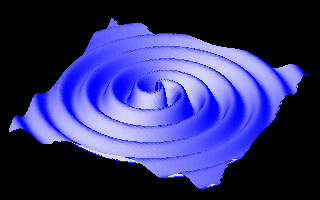Gravitational wave astronomy
During the past century, astronomy has been revolutionized by the use of new methods for observing the universe. Astronomical observations were originally made using visible light. Galileo Galilei pioneered the use of telescopes to enhance these observations. However, visible light is only a small portion of the electromagnetic spectrum, and not all objects in the distant universe shine strongly in this particular band. More useful information may be found, for example, in radio wavelengths. Using radio telescopes, astronomers have found pulsars, quasars, and made other unprecedented discoveries of objects not formerly known to scientists. Observations in the microwave band led to the detection of faint imprints of the Big Bang, a discovery Stephen Hawking called the "greatest discovery of the century, if not all time". Similar advances in observations using gamma rays, x-rays, ultraviolet light, and infrared light have also brought new insights to astronomy. As each of these regions of the spectrum has opened, new discoveries have been made that could not have been made otherwise. Astronomers hope that the same holds true of gravitational waves.
Gravitational waves have two important and unique properties. First, there is no need for any type of matter to be present nearby in order for the waves to be generated by a binary system of uncharged black holes, which would emit no electromagnetic radiation. Second, gravitational waves can pass through any intervening matter without being scattered significantly. Whereas light from distant stars may be blocked out by interstellar dust, for example, gravitational waves will pass through essentially unimpeded. These two features allow gravitational waves to carry information about astronomical phenomena heretofore never observed by humans, and as such represent a revolution in astrophysics.


Leave a comment